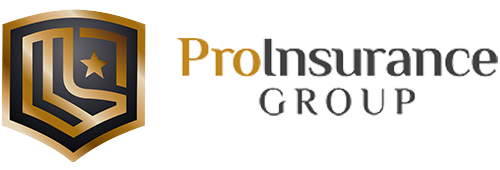
The right homeowners insurance policy can protect your home and additional structures from costly unforeseen circumstances such as fire, theft, weather, and more. However, for many Illinois homeowners, the market is oversaturated with insurance agencies.
Choosing the right policy for your property’s current needs and future eventualities can be a difficult process. Continue reading to learn how to shop for homeowner insurance for Illinois properties, including how to select the best policy for covering additional structures.
Understanding Additional Structures
Any structure outside of the main house could be considered an additional structure. However, certain policies define structures differently based on their construction. Common examples include:
- Garages
- Pools
- Fences
- Sheds
- Driveways
- Guesthouses
- Docks
- Walkways
- Workshops
Many Illinois homeowners believe their additional structures are covered, while the fine print of their policy may say otherwise. For example, a walkway may only be covered if it connects to the main house and has a covering.
In-ground pools may be included under basic dwelling insurance, while above-ground pools may need additional coverage. Speak with prospective insurance providers about how they handle additional structures, including those you currently have and any you may want to build in the future.
Why Standard Homeowner’s Insurance May Not Be Enough
While coverage for additional structures is not usually required by law, standard homeowner’s insurance policies often only cover the main dwelling. Even structures that can sometimes be covered, such as a shed or workshop, may be denied coverage if used for commercial purposes.
Additionally, standard insurance may not cover all types of damage. Your policy will list the “named perils” that it covers, including anything from smoke and wind damage to fire, falling objects, and theft. For sudden accidents that fall under the listed categories, standard insurance can be enough in certain circumstances.
However, a policy with additional structures coverage is needed to address gradual wear and tear and specific types of damage that commonly impact Illinois homeowners.
Importance of Tailored Coverage for Additional Structures

Default homeowner’s insurance policies may not apply to the specifics of your situation, leaving you vulnerable to costly damages. Customized policies enumerate specific structures to make sure they’re covered for any eventuality.
Many Illinois homeowners fail to realize that even some additional structures policies leave coverage gaps for certain types of damage. For example, most policies neglect “earth movement” damage such as landslides and earthquakes, as well as infestations from wood-boring insects, such as carpenter ants, termites, and powder post beetles, which are common in Illinois.
To create a more comprehensive coverage plan, many Illinois homeowners customize their policies with specific riders and endorsements to cater to their specific structures, the layout of their property, common weather and pest damage in their area, and more.
How Additional Structures Can Impact Your Insurance Premiums
The cost of additional structures coverage varies by the policy provider and the standard dwelling coverage on the home. However, as a general rule, additional structures coverage costs around $0.30-$0.50 per $100 of additional coverage.
These policies typically cover up to 10% of your dwelling coverage limit. For example, if the home has dwelling coverage up to $400,000, the other structures may have coverage up to $40,000.
This situation would equate to roughly $120-$200 in additional premiums, though this is only a general estimate. It’s imperative to speak with all prospective policy providers about their pricing models to learn how the additional coverage will be calculated in your situation.
Common Misconceptions About Insuring Additional Structures
Here are a few common misconceptions that Illinois homeowners should be aware of when choosing an additional structures policy for their property:
1. Structures Listed in the Policy are Always Covered
Many homeowners assume that a structure listed in their policy is protected against damages without additional coverage. However, structures used for commercial purposes, such as a shed used to store business equipment, are not usually included in basic homeowners insurance policies.
2. Structure Valuation Doesn’t Have to Be Exact

Many homeowners avoid accredited property evaluators when estimating the value of their home and additional structures. However, many homeowners are denied coverage for incorrectly estimating the property’s value or using their mortgage as a baseline.
3. Wear and Tear is the Same as Accidental Damage
Insurance policies cover sudden, accidental damage, but most require additional coverage for wear and tear due to natural conditions such as weather and pests.
Get Comprehensive Coverage with Pro Insurance Group
Choosing the right homeowners insurance agency is necessary for making sure you, your family, and your valuable belongings are covered for any eventuality. At Pro Insurance Group, our team leverages years of expertise in Illinois homeowners insurance to customize policies for our clients that fully meet their needs.
Contact us and schedule a consultation to learn how our experts can help you create a policy that meets your needs and regularly review your policy to make sure your most valuable assets stay covered even when situations change.
